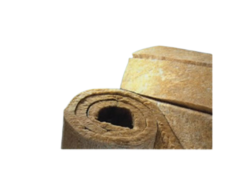Osaka Manufacturing Co., Ltd.
Osaka Manufacturing 3000N Carbon Cloth

Manufacturer: Osaka Manufacturing Co., Ltd.Model: #3000N
Product: Carbon Cloth
Description
#3000N (Domestic Product)
#3000N is a sheet made by weaving 100% carbon fibers and impregnating it with a fireproofing agent.
It offers superior heat resistance compared to untreated carbon fibers and does not cause skin irritation like fiberglass materials.
#3000N
Standard Dimensions
Original size: 2.3mm (thickness) × 1,000mm (width) × 20m (length)
- 1 × 1: 920 × 920mm
- 1 × 2: 920 × 1,920mm
- 2 × 2: 1,900 × 1,920mm
- 2 × 3: 1,900 × 2,920mm
Notes:
- Made with woven P-aramid threads.
- Grid pitch approximately 500mm.
- Custom sizes are available upon request.
- P-aramid threads are resistant to long-term temperatures up to 260°C.
Material Properties
- Composition: 100% carbon fibers
- Weight (g/m²): 750
- Yarn Count (threads/10mm): 64 × 36
- Tensile Strength (N/Normal): 1,049 × 568
- Tensile Strength (After heating at 400°C for 30 minutes): 264 × 106
Features and Safety
- Excellent fire resistance and heat resistance due to the impregnation of fireproofing agents into the carbon fibers.
- Can be used as insulation material due to its thickness.
- Lightweight and easy to handle and transport.
- Does not emit toxic gases.
- Does not cause skin irritation like fiberglass.
- Does not contain asbestos.
⚠ Danger
If mishandled, this product may result in death, serious injury, or significant property damage.
- Do not perform welding, fire-handling, or related operations near flammable substances, such as oils or solvents, regardless of whether the sheet is used or not. There is a risk of fire or explosion.
⚠ Warning
If mishandled, this product may result in death, serious injury, or significant property damage.
- Always follow fire prevention regulations and proper welding procedures when performing welding.
- Avoid the following actions, as they may cause holes in the material and lead to fire or explosions:
- Exposing the material to strong acids or strong alkaline chemicals.
- Forcibly peeling off adhered “slag” (residue from welding).
- Applying a burner or flame directly to the material.
- Placing heavy objects on or dragging them across the material.
- Inspect the sheet for holes or damage before use. Do not use it if any are found.
- Do not use this material as a construction (e.g., mesh) sheet.












